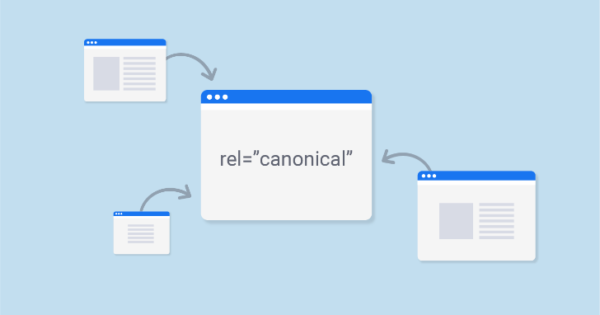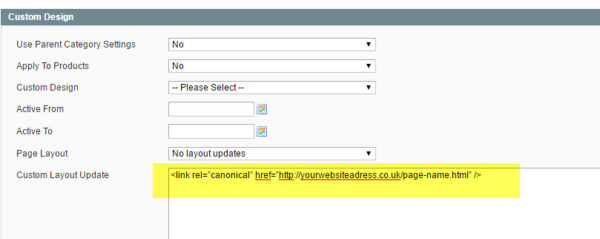What is Better for SEO? 301 Redirect VS Rel=Canonical
It’s your number one mission with your business’ website, right? Keep on improving your SEO ranking. To help you navigate a somewhat complicated aspect, referred to as ‘duplicate content’, we compiled a quick reference guide below.
301 redirect and rel=canonical tags are often mentioned, but do they apply to you? Below we help you understand the concepts in order to make the right technical SEO decisions going forward. In this case, how you’ll design your URLs, and which tags you’ll assign to them.
Real Life Scenarios
Have you ever faced these scenarios?
- You have multiple URLs related to your website that are the same. This could be two products that are exactly the same, except for their colours or recurring events.
- You recently launched a new website to replace your old one. It has more or less the same content, and similar URLs are being used.
When you own a website, you can never assume everything will work out to your benefit. During each step you have to tell search engines exactly what you need from them. In these cases, things can seem very unclear.
Why Do You Need Solutions?
In the cases mentioned above you run the risk of:
- Search engines thinking you create duplicate content, which can impact your SEO negatively. This is because original content is associated with quality websites. You can be penalized when search engine crawlers notice your pages have a lot of similar content or if your information is repeated on other websites.
- Creating scenarios that aren’t user friendly (search engines are unsure of your expectations or intent with the pages) which search engines frown upon.
- Search engines displaying the wrong page on your site to users. If they land on a page that’s less focused on funnelling them towards making a purchase or commitment, you’ll lose business. It also means the hard work you did on the right pages is all for nothing.
What’s the Solution?
Luckily there are many methods—mostly through URL tags—to solve this challenge. Some of the most popular are 301 Redirect tags and Rel=Canonical tags.
But where stakes are so high you need to use the most beneficial option. Note that each one of these work for unique circumstances, explained in more detail below.
301 Redirect vs Rel=Canonical
Rel=Canonical Explained
Example
When you audit the page HTML’s head section, it will look something like this:
<link rel=” canonical” href=”https://www.websitename.com/blog/product-description-A” />
Explanation
A canonical tag (also known as a rel=canonical) communicates to search engines which of your pages is the preferred option:
- The master copy containing all important information (not simply some of the similar content).
- The page you want Google to display on search lists, so consumers navigate there first.
This simple text shows search engines that you’re aware of duplicate content, but it’s that way for a reason. It also tells them which part of your content you want displayed.
When to use Rel=Canonical
This gives you a quick fix in these situations:
- You create an updated version of an outdated post—you don’t want search engines to send online browsers to the old post, but you also don’t want an error message (such as a 404-error message) due to deleting the content.

- You may want to discuss your products on another blog, but when someone searches for your information, you want to channel them to your website, not someone else’s blog.

Note that this tag doesn’t block crawlers from seeing the pages where content is duplicated. It simply confirms which is the better or preferred page.
301 Redirect Explained
Explanation
While rel=canonical tells search engines about preferred pages, there are pages you don’t want browsers to navigate to at all. A 301 redirect tells search engines that there’s a new alternative to previously used pages.
Without redirecting them to the new pages it may once again seem you’re duplicating information. The goals of SEO and canonical tags align: They ensure search engines know you’re aware of duplication, but you don’t really want the old information seen anymore.
When to Use 301 Redirect
The link between 301 redirect and SEO becomes clear when looking at these circumstances:
- It helps you keep your website up to date with changes in products or events. When an event is over but there’s a new one coming, you’ll redirect any traffic from the old one to the new.
- The above instance also applies if you know the page (e.g. for an event) will expire but you don’t want to lose the traffic it generated.
- You’re moving your entire site. You don’t want to lose the traffic the old site drew, but you need to make sure they see your updated version now.

Conclusion
It’s clear that there is no universal ‘better option’. It’s simply the BETTER option in a certain scenario. And don’t dare neglect these methods, as duplicate content can create havoc with your technical SEO ratings.
Do you have any other questions or comments regarding this matter? Please leave a comment below and let’s learn from each other.
Author’s Bio

My name is Theresa Le Roux, I am originally from Montreal, Canada but I have spent the last 5 years in beautiful New Zealand. I write SEO/Digital marketing/SMM articles for businesses that want a different perspective on subjects that are important to their content output. This can also help grow rankings in the process so it’s a win-win!
I regularly contribute articles about the always changing world of SEO to Clickthrough.co.nz.
I am a diehard Game of Thrones fan with a passion for novels and live music! My career goal is to one day write a novel of my own.
Connect me via email [email protected].















